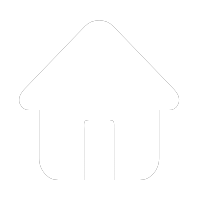Blog
AI + IoT in Modular Housing: The Future of Smart Container Homes in Australia

Table of Contents
-
Introduction
-
What Are Smart Modular Homes?
-
The Role of AI in Housing Innovation
-
IoT in Modular Living: Devices and Systems
-
Core Benefits of Smart Modular Homes
-
Market Applications and Use Cases
-
Policy and Regulatory Outlook in Australia
-
Business and Market Potential
-
Key Challenges and Barriers
-
Future Trends in Smart Modular Housing
-
Conclusion
-
FAQ
-
Marketing Highlights
1. Introduction
Australia’s housing crisis is driving interest in prefabricated and modular solutions, valued for speed, affordability, and sustainability. Yet the next wave of disruption comes from digital intelligence.
By embedding AI-driven predictive systems and IoT-enabled devices, modular housing is evolving into smart modular living ecosystems. These homes are no longer just spaces to inhabit — they are adaptive environments capable of anticipating needs, conserving resources, and delivering seamless convenience.
2. What Are Smart Modular Homes?
A smart modular home combines prefabricated construction with intelligent digital systems. Built from container-based or modular frameworks, they are equipped with:
-
AI algorithms that analyze occupant behavior and optimize performance.
-
IoT sensors that track energy, water, lighting, and security systems.
-
Integrated platforms for remote monitoring and control.
Unlike traditional homes, smart modular homes are scalable, portable, and upgradeable, making them ideal for Australia’s diverse housing needs.
3. The Role of AI in Housing Innovation
Artificial Intelligence is transforming housing into responsive, learning environments.
-
Predictive Energy Management: AI forecasts occupant activity, adjusting HVAC, lighting, and appliances to cut energy use.
-
Behavioral Adaptation: Systems learn individual preferences, ensuring comfort while reducing waste.
-
Maintenance Prediction: AI predicts when systems (like HVAC or solar batteries) need servicing, avoiding costly downtime.
-
Smart Grid Interaction: Homes optimize when to draw or store energy, lowering bills and enhancing sustainability.
4. IoT in Modular Living: Devices and Systems
The Internet of Things (IoT) connects smart devices into a housing ecosystem:
-
Smart Meters: Real-time monitoring of power and water usage.
-
Connected Sensors: Detect temperature, humidity, motion, and air quality.
-
Home Automation Devices: Control lighting, locks, appliances, and entertainment.
-
Security Systems: Smart cameras, alarms, and alerts for homeowners.
IoT integration transforms a modular house into a data-driven living unit, capable of continuous improvement.
5. Core Benefits of Smart Modular Homes
-
Energy Efficiency: AI + IoT systems cut energy costs by 20–40%.
-
Personalized Comfort: Automated adjustments for optimal lighting, temperature, and air quality.
-
Sustainability: Efficient use of renewable energy and water recycling reduces carbon footprints.
-
Safety and Security: IoT-enabled monitoring strengthens household protection.
-
Market Value: Smart-ready modular homes command higher resale and rental values.
6. Market Applications and Use Cases
Smart modular homes suit a wide range of applications:
-
Urban Housing: Compact, AI-enabled container homes maximize space and efficiency in cities like Sydney and Melbourne.
-
Remote Off-Grid Living: IoT-powered solar and water systems ensure full independence in rural Australia.
-
Emergency Housing: Rapid-deployment smart modules provide efficient, livable shelters during crises.
-
Luxury Resorts and Holiday Pods: High-end retreats combine sustainability with IoT-driven comfort.
-
Student and Worker Housing: Affordable, smart-enabled modular units for universities and mining towns.
7. Policy and Regulatory Outlook in Australia
Australia’s National Construction Code (NCC) is preparing for updates to accommodate smart housing technologies. These include:
-
Standards for energy-efficient smart systems.
-
Safety regulations for connected IoT devices.
-
Guidelines for renewable integration in modular housing.
State governments are also considering incentives for smart prefab housing, aligning with national carbon neutrality targets.
8. Business and Market Potential
The business case for smart modular homes is strong:
-
Developers: Differentiate projects with smart-ready features.
-
Investors: Benefit from higher rental yields and resale values.
-
Technology Providers: New markets for AI platforms, IoT sensors, and cloud analytics.
-
Homeowners: Lower operating costs and increased living quality.
Globally, the smart housing sector is projected to reach hundreds of billions by 2030, and modular housing will be a key driver.
9. Key Challenges and Barriers
-
Upfront Costs: AI + IoT integration increases build costs by 10–20%.
-
Connectivity Issues: Remote areas lack reliable internet.
-
Cybersecurity Risks: Data protection is critical for consumer trust.
-
Market Education: Many Australians are still unfamiliar with smart modular concepts.
10. Future Trends in Smart Modular Housing
-
AI-Powered Communities: Modular neighborhoods that share renewable energy.
-
Blockchain for Energy Trading: Secure peer-to-peer power exchange.
-
EV Charging Integration: Smart homes linked with electric vehicles.
-
Adaptive Architecture: Modular systems that evolve with AI-driven design recommendations.
By 2035, smart modular living could represent a mainstream residential choice across Australia.
11. Conclusion
The fusion of AI and IoT with modular housing is more than a trend — it’s a paradigm shift. Smart prefab and container homes are reshaping how Australians live, work, and interact with housing.
These homes are efficient, adaptable, and sustainable, offering not just a roof over one’s head, but a living system that grows smarter over time.
12. FAQ
Q1: What is a smart modular home?
A prefabricated or container home equipped with AI and IoT systems for automation, efficiency, and comfort.
Q2: Are smart modular homes expensive?
Initial costs are higher, but long-term savings in energy and maintenance offset the investment.
Q3: Can smart systems be added to existing prefab homes?
Yes. Most AI and IoT technologies can be retrofitted.
Q4: Are they suitable for off-grid living?
Yes. With solar, storage, and IoT integration, modular homes can be fully self-sufficient.
Q5: Do Australian regulations support smart housing?
Yes, the NCC is evolving to accommodate smart systems, with state incentives expected to grow.

















